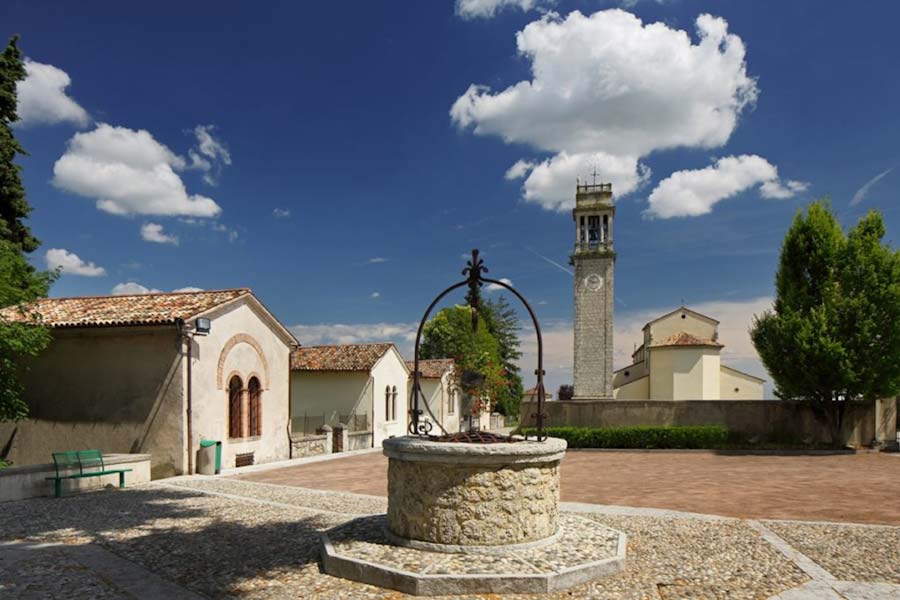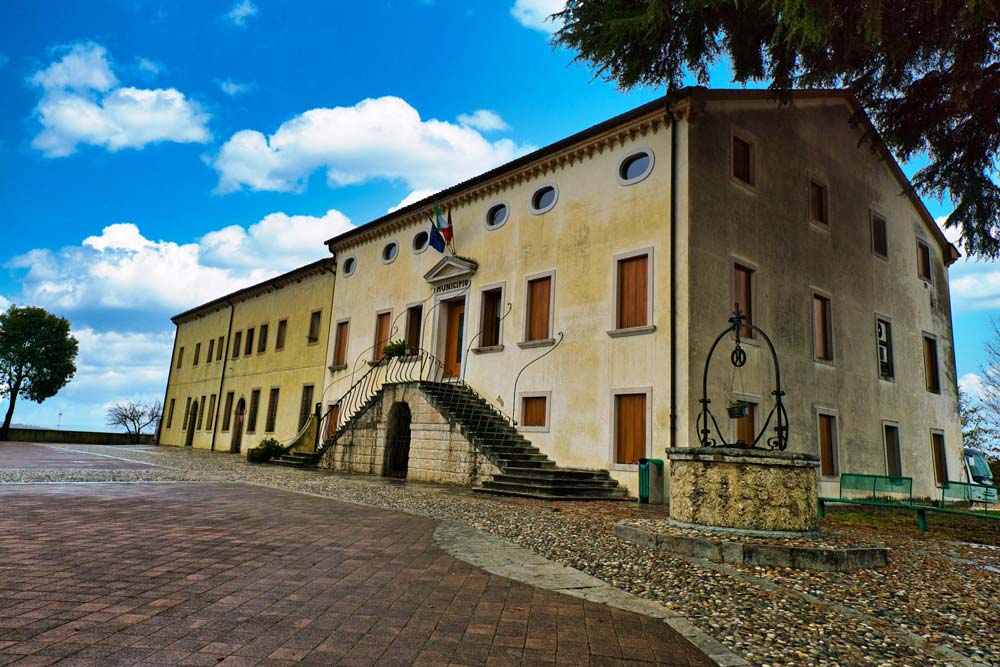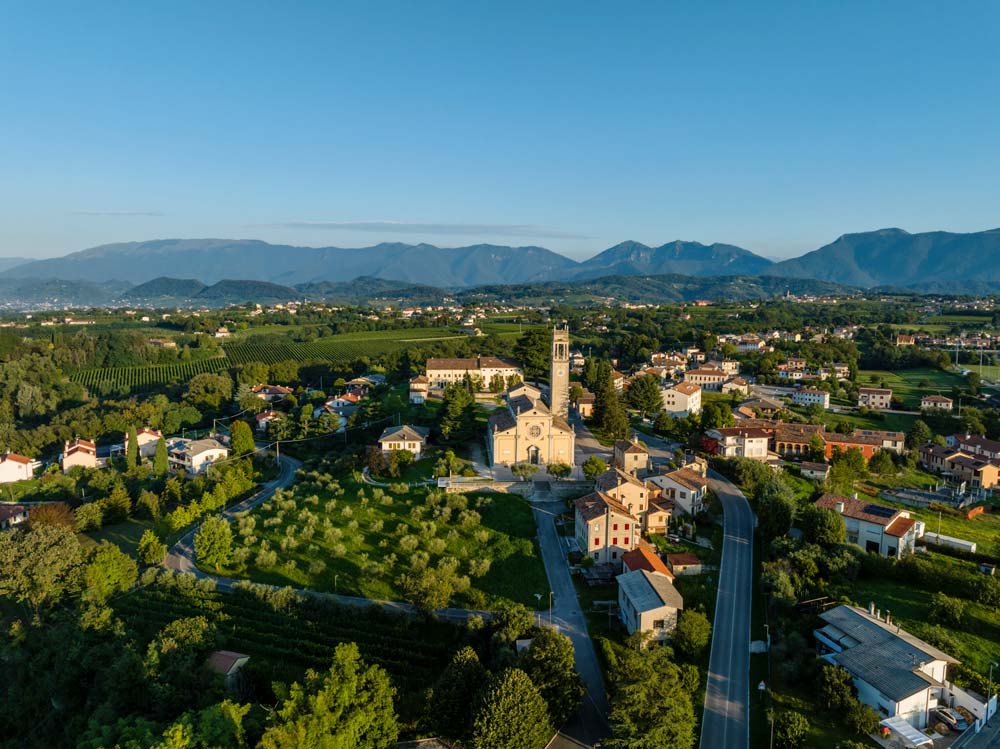In the hamlet of Rua di Feletto, you can observe the remains of the Ancient Camaldolese Hermitage built on Colle Capriolo in the second half of the seventeenth century, now the municipal seat. The history of the hermitage began in 1665 when the Venetian patrician Alvise Canal donated a hill with an adjoining noble palace to the hermit monks of San Romualdo.
The monks built the church around it, 14 cells, each with a garden, vegetable patch, dividing walls, services and cloistered walls. The hermitage became a destination for pilgrims and men of culture who appreciated its picturesque hillside location and rich library. Four monastic cells, the palace and the Church, dedicated to Santa Maria Assunta and San Romualdo, are still preserved today.
Along a short path that leads from Borgo America to the Hermitage, it is possible to come across a crucifix supported by a very ancient stone. This warning is engraved on it: “Women should not pass this cross under penalty of excommunication”. A clear reference to male monastic rules.
Inside is a fine wooden altarpiece from the second half of the 1600s by G.B. Ghirlanduzzo, a sculptor from Ceneda.





